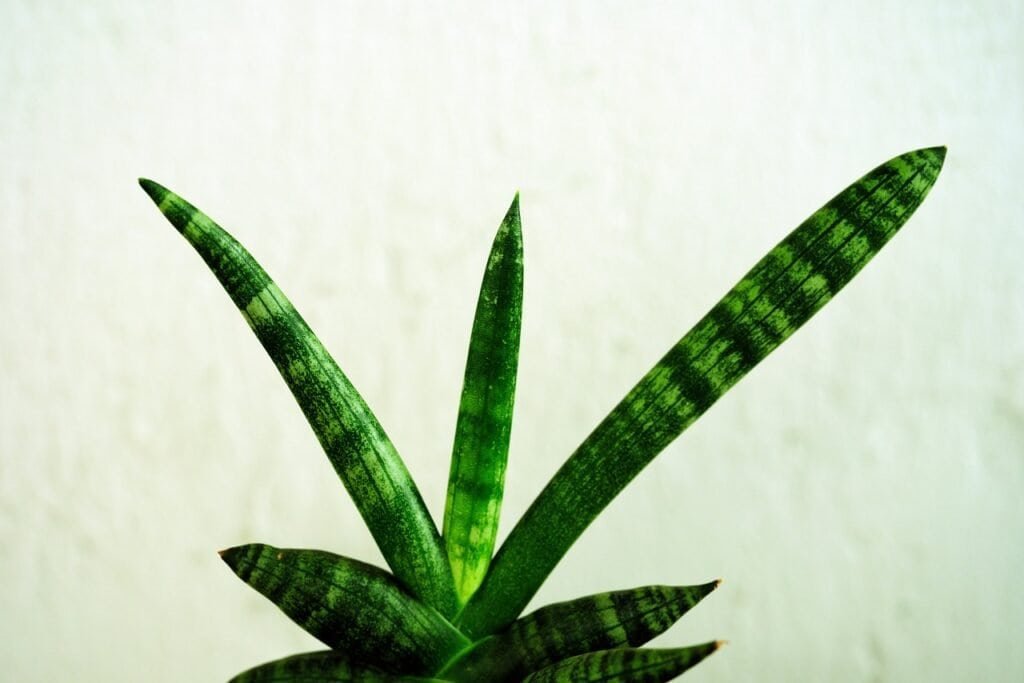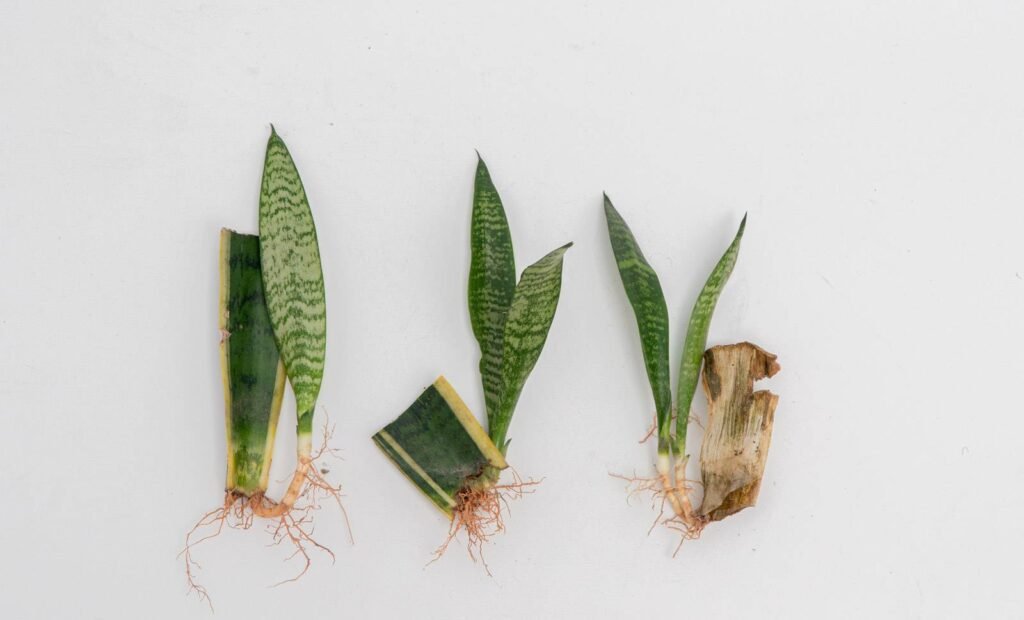Caring for Snake Plants: Tips and Considerations
Did you know that the snake plant is actually a kind of dracaena and it grows in the Highlands of Kenya, Zimbabwe, and also in some parts of Asia? What is interesting about this plant?
That is the locals use it to treat earaches, snake bites, and even ulcers. Supposedly, it is an easy-to-care-for plant, but despite that, I have often managed to mess up with it. Sometimes it just dries up, sometimes the cuttings start to rot, and sometimes it just takes forever to grow.
So today, I am going to try and share whatever I have learned about caring for this plant.
Table of Contents

Growth
How can one improve its growth? After much experimentation, I have realized that the snake plant does best in small pots. You don’t have to repot this plant very quickly.
Now, of course, adding fertilizer also helps, but since this plant is able to sustain in conditions where there are not a lot of nutrients in the soil, it can still do well without fertilizer.
The main thing is that you concentrate on the size of the pot. If you use a big pot with just a couple of leaves, these leaves will take a very long time to establish themselves in the soil and will take a lot of time to see new growth coming out.
Watering & Lighting
The second most important factor is watering. Since this is a succulent, meaning a plant that stores water in its leaves, if you keep watering it too much – when I say too much, I mean if you water it properly every 2 to 3 days, it’s too much for this plant and it will start becoming soggy.
So, you don’t want that to happen. On the other extreme, if you don’t water it at all, you would see that the leaves are drooping and they also become very soft, and if this continues, they eventually become brown and completely dry out. From this stage, there is no way to go back. You can’t reverse this.
So, it is important to keep an eye on your plant. If you see that the leaves are drooping and they become soft, then most likely your plant is thirsty, and you need to add water to your plant. But this also happens if you water your plants too much.
An ideal frequency to water this plant is probably once every 14-15 days.
If you see that the edges have started becoming brown, it’s most likely due to infrequent watering. Sometimes the problem is watering too much and sometimes you just don’t water. In both these cases, what you should do is first follow a regular regime of watering.
A snake plant needs watering every 14-15 days and should be placed in a valid place. Now what is a valid place? Your bedroom can be a valid place if it doesn’t get direct sun and it is not dark also. In the daytime, it doesn’t need a tube light. So, for most indoor plants, shift them to a space like this and follow regular watering. This will basically help your plant to gain immunity to fight any problems it faces, which a lot of times could be a disease or a fungal problem as well.
This reminds me of something fun I read online. It said, “Remember to drink water and get some sun; basically, humans are like plants just with complicated feelings.” Isn’t that so?
Anyways, you might have seen sometimes the leaves have started drooping. If all the leaves are drooping, that means it’s a watering problem, but if only one or two are drooping, this means it’s a light problem.
When the plant is starving for light and is not able to carry on its normal photosynthesis process, some of the leaves start drooping. In this case, you should shift your plant to a well-ventilated place. You can keep this plant for a week or 10 days in this place and then shift it back as well. But just giving it a good dose of light doesn’t help the leaves to stand up with it again.
Propagation
Now, the other problem I face with this plant is its propagation. By the book, you can take a cutting either and entirely or you can cut into 3-inch pieces and propagate it in water or in soil. Now, I took a couple of cuttings about two weeks back, and I completely failed with it. I started them in water.
About 3-4 months back, I did exactly the same but it was successful in water. What went wrong was that I forgot to change the water.
Now, if you are as forgetful as me or if you are lazy also like me, I would say then start them in dry soil and do not water. Why? Because it will increase the chances of rot. Start watering only after 3-4 days; by that time a callus would have formed. When you propagate a snake plant, it can also take about 30 days to a month for the roots to grow, and that’s completely okay.

Recommendation
One thing I would recommend for a snake plant is to start them in a pot. Do not start them in the ground because once it’s able to establish itself in the ground, it will grow wildly. It will grow crazily, and you don’t want that to happen because then it will stop or hinder the growth of other plants.
So, the better idea is to grow them in pots. All these steps that I am sharing with you is applicable to all the varieties of snake plant. Actually, this term “varieties” is very confusing. Sometimes people use it to refer to a sub-species, which is just a variation of species, and sometimes people are referring to different species of the same genus.
You don’t have to get into those details if it’s confusing. I’m really sorry, but I wanted to point out that all the varieties of snake plant that you see in the market, these tips will be applicable for them.
Fun fact: Until 2015, scientists thought that this is a species of Sansevieria. But in 2015, they found out this plant is actually a species of Dracaena and it’s no more a different species.
So to summarize, if you don’t have any indoor plants and you are looking for that one which is easy to care for, I would say invest in a snake plant. It’s pretty simple to care for, and you can multiply it very easily with water or soil.







 *(Include an image of droopy leaves)* Some plants, such as calatheas, prefer moist soil at all times; otherwise, they develop that signature brown tissue damage on the leaves. The annoying thing here is that the damage cannot be reversed and can only be cut away, leaving you with a damaged plant. If the soil of your plant is bone dry, you'll notice that it's pulling away from the sides of the pot. This is because the soil has shrunk due to a lack of moisture, so make sure you are not letting this happen by watering a little more frequently. #### Signs Your Plant is Overwatered (darkgreen) Overwatering plants is a really common way that people kill their plants. Beginner plant enthusiasts often have a common misconception that houseplants need lots of water, but the reality is that these plants are native to hot climates where they may get periods of drought followed by large rain which rehydrates them. **Yellowing leaves** (red) can indicate an overwatering problem as well as an underwatering problem. If you are watering your plant too often and the soil is always wet, this can lead to root rot, which will begin to affect the leaves of your plant. **Limp and mushy leaves** (red) also indicate that you are overwatering your plant. This is particularly true with succulents such as Echeverias. Echeverias store water in their thick leaves and have difficulty storing excess water if you are watering your plant too often. This leads to mushy plants that eventually fall off.  *(Include an image of yellowing leaves)* Philodendron and Pothos plants tend to get mushy leaves that fall off if the soil is consistently soggy. My Philodendron Birkin recently developed some new brown leaves that fell off because I was overwatering it. Whereas crispy brown edges on leaves indicate an underwatering problem, if the whole leaves are turning brown, this tends to mean that the plant tissue is rotting due to too much water. You may also notice some water droplets on the ends of the leaves of some of your plants. This is the plant perspiring excess water through its leaves and can indicate that you are giving the plant too much water. Now, this tends to happen on plants that prefer drier soil, and I notice it quite often on my Philodendron Birkin and my Tradescantia Nanook. **Increased presence of fungus gnats** (red) can also be a sign that your plant is too moist. Fungus gnats like a moist top two inches of soil to breed and lay their eggs, so if your soil is wet, it creates a breeding ground for gnats. If you see lots of flea-like flies jumping around the top of your soil, I would just dial back on the watering and let the top two inches of the soil dry out before watering again. #### Watering Tips (darkgreen) It is important to allow the soil of your houseplant to dry out between waterings. This prevents the possibility of over-watering, which is one of the most common reasons people kill their plants. **Check the soil moisture** (red) before watering your plant by sticking your finger two inches into the soil. If it feels wet, leave it a few days and then check again. An even better way to check the soil moisture is to invest in a moisture meter. This device needs no batteries and tells you exactly how much moisture is in the soil, giving you control over watering your plants.  *(Include an image of a moisture meter)* When you identify that your plant needs water, make sure you give it a thorough soaking. Take your plant to a sink area and soak the soil four or five times until water drains out of the bottom each time. This ensures that all the soil in the pot gets moistened and there are no dry patches. **Bottom watering** (teal) is a method that has changed the health of my plants since I implemented it a couple of years ago. Place your plant in a container of water and let it absorb moisture from the bottom up. This method prevents water from getting on the leaves, which can cause leaf tissue damage. I hope this article was helpful. Now you know when to water your plants and when not to. Apply this knowledge to your plants and see the growth. Happy gardening! --- Incorporating these visual and formatting enhancements will make your article more attractive and engaging for your readers.](https://growinggaze.com/wp-content/uploads/2024/05/pexels-artempodrez-7242495-scaled.jpg)

